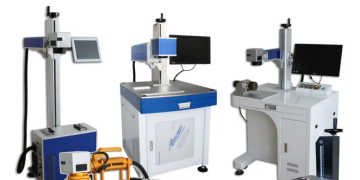The healthcare landscape is constantly evolving, and one technology driving significant advancements is 3D printing. With its ability to create custom objects layer by layer, 3D printing has emerged as a transformative force in various industries, including healthcare. In Texas, where innovation and healthcare excellence thrive, 3D printing services transform medical applications, paving the way for groundbreaking patient care and treatment advancements.
Furthermore, the integration of 3D printing in surgical training and simulation is enhancing the skills of healthcare professionals. Texas-based medical institutions utilize 3D-printed models to practice complex procedures, refine surgical techniques, and ultimately provide safer and more effective patient care.
Significance of 3D printing in the healthcare industry
The revolutionary influence of 3D printing on the healthcare sector cannot be overstated. It has transformed how medical professionals approach patient care, surgical procedures, and the development of medical devices. The critical significance of 3D printing lies in its ability to create complex, patient-specific objects with high precision and customization.
By leveraging 3D printing technology, healthcare professionals can now produce customized prosthetics, implants, and anatomical models tailored to individual patients. This customization enhances medical devices’ fit, functionality, and comfort, resulting in improved patient outcomes and quality of life.
Furthermore, 3D printing enables the rapid prototyping and iterative design of medical devices, reducing development time and costs. It allows for creating intricate structures and complex geometries that were previously challenging or impossible to achieve with traditional manufacturing methods. This flexibility opens up new possibilities for innovation and advancements in the healthcare industry.
Focus on medical applications in Texas
3D printing technology has emerged as a game-changer in healthcare, transforming medical applications across various fields. With its thriving healthcare industry and technological advancements, Texas stands at the forefront of this revolution. Here is the transformative impact of 3D printing in Texas medical applications, showcasing the innovative ways this technology is improving patient care and medical outcomes.
Customized Prosthetics and Orthotics:
One area where 3D printing has made significant strides is in the development of customized prosthetics and orthotics. By leveraging the power of 3D printing, healthcare professionals in Texas can now create prosthetic limbs and orthotic devices explicitly tailored to individual patients. This customization enhances the comfort and functionality of these devices and improves patients’ quality of life.
Patient-Specific Implants and Surgical Guides:
The ability to produce patient-specific implants and surgical guides is another breakthrough made possible by 3D printing in Texas. Surgeons can now use precise anatomical models created through 3D printing technology to plan complex procedures, resulting in improved surgical outcomes and reduced risks. Texas medical professionals can enhance implant functionality and patient recovery by manufacturing implants that perfectly match a patient’s anatomy.
Bioprinting and Tissue Engineering:
Texas-based 3D printing services are making groundbreaking strides in bioprinting and tissue engineering, ushering in a new era of medical possibilities. Bioprinting involves the creation of living tissues and organs using 3D printing technology. By leveraging the capabilities of 3D printing, researchers and healthcare professionals in Texas are advancing the field of regenerative medicine. This technology enables the fabrication of patient-specific tissues and organs, reshaping areas such as organ transplantation and tissue regeneration. The breakthroughs achieved by Texas-based bioprinting research are poised to transform medical treatments and save countless lives.
Surgical Training and Simulation:
3D printing is also transforming surgical training and simulation in Texas. By producing lifelike models of anatomical structures, surgeons can practice complex procedures and develop new techniques in a safe and controlled environment. Texas medical institutions are adopting simulation-based training programs utilizing 3D-printed models, enhancing surgical skills and improving patient outcomes.
Drug Delivery Systems and Pharmaceutical Applications:
In the pharmaceutical realm, 3D printing is making strides in developing customized drug delivery systems. By utilizing 3D printing technology, Texas researchers and pharmaceutical companies can create personalized dosage forms that cater to individual patient needs. This advancement allows for precise drug administration and enhances medication effectiveness, furthering personalized medicine’s potential.
Challenges and Future Directions:
While the impact of 3D printing in Texas medical applications is undeniable, there are still challenges to overcome. It is imperative to tackle the regulatory aspects pertaining to the safety and effectiveness of 3D-printed medical devices. Scalability and cost-effectiveness are also areas that require further exploration. However, Texas remains at the forefront of innovation, and the future holds great promise for 3D printing in healthcare.
Potential future developments and Impact on Healthcare in Texas

Looking ahead, the future of 3D printing in Texas healthcare holds immense promise. Several potential developments are on the horizon which can transform patient care and the healthcare industry.
Advancements in bioprinting research may lead to the creation of functional human tissues and organs suitable for transplantation, addressing the critical shortage of donor organs. Texas’s dedication to advancing bioprinting technology establishes the state as a frontrunner in regenerative medicine, offering immense potential to enhance patient outcomes and save numerous lives.
Furthermore, integrating artificial intelligence (AI) and machine learning (ML) with 3D printing technology in Texas can enhance the design process, optimize structures for improved performance, and enable personalized treatment plans. AI algorithms can analyze patient data and maximise the customization of medical devices, creating tailored solutions that cater to individual needs.
In addition to patient care, 3D printing in Texas can potentially transform medical education and research. Medical schools and research institutions can leverage 3D-printed anatomical models for enhanced learning experiences and innovative research projects. This technology facilitates a deeper understanding of complex anatomical structures and enables the development of novel surgical techniques.
Conclusion:
Texas’s healthcare sector is embracing the potential of 3D printing technology, transforming medical applications and patient care. The state’s focus on customized prosthetics and orthotics, patient-specific implants, bioprinting, and surgical training demonstrates its commitment to pushing the boundaries of medical innovation. By harnessing the power of 3D printing services, Texas is at the forefront of improving patient outcomes, enhancing surgical precision, and driving advancements in regenerative medicine. With its robust healthcare infrastructure and technological prowess, Texas continues to lead the way in leveraging 3D printing for transformative medical applications, shaping the future of healthcare for the better.




























































